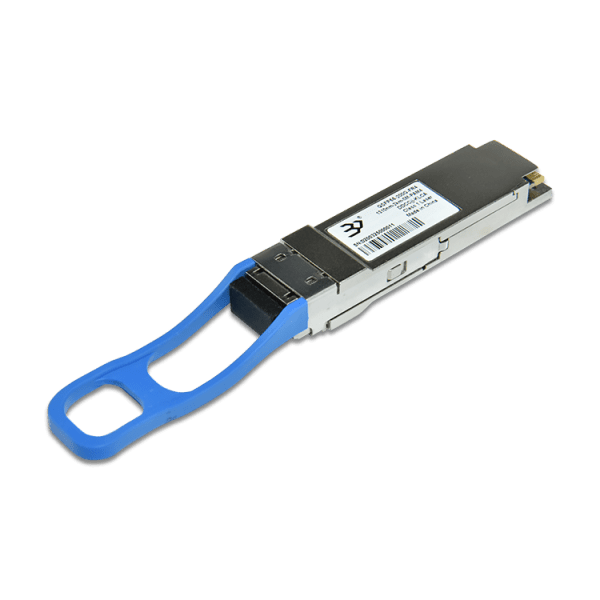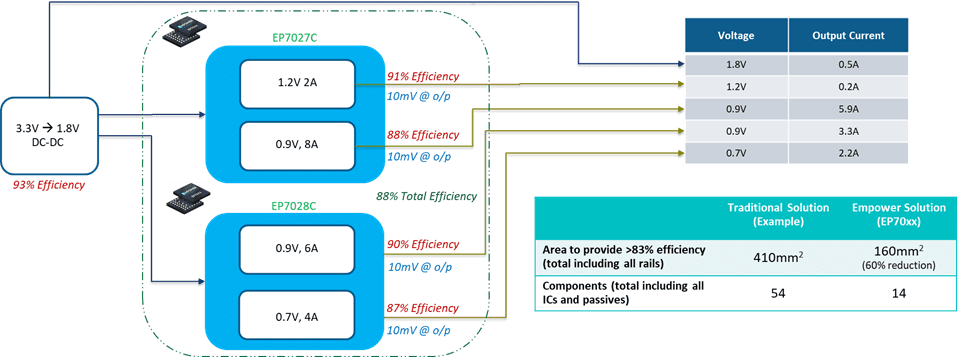Optical Transceivers
Widely used in data centers, optical transceiver modules convert the electrical signals from a switch, router or other piece of networking equipment to an optical signal that can be transferred over a high-speed fiber connection. As transceiver data speeds continue to increase up to and beyond 400Gbps, so too do module power requirements. However, because such modules must conform to industry standard form factors there is no corresponding increase of space in which to accommodate larger power supplies. As a result, efficiency and power density are primary design considerations.
This is why compact, high-efficiency integrated voltage regulators (IVRs) that eliminate the need for external components are the perfect choice for creating the many voltage rails required in today’s optical transceivers.

A typical optical transceiver power requirement will have a number of different voltage rails that all need to be derived from a single 3.3V system input. The table below illustrates an example of this requirement, which demands a total output power of less than 12W.

A conventional solution would require at least three power management ICs (PMICs) and over 50 other inductive and passive components. However, as shown below, choosing Empower’s integrated voltage regulator (IVR) technology reduces this to just two IVRs and 12 other components. The result is a significantly reduced BOM and a 64% reduction in board space.
